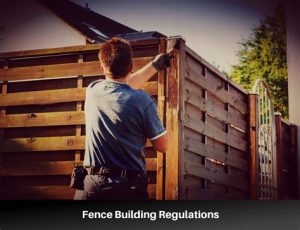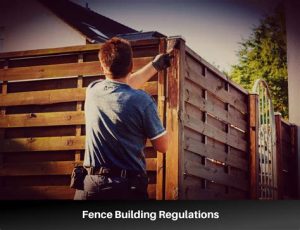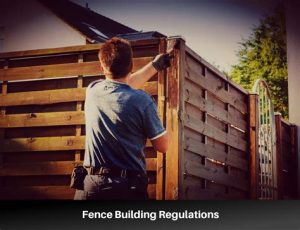Explore the permitting process, factors influencing approval, typical timelines, ways to expedite permits, and the impact of delays on your project timeline.Building a fence can enhance your property’s privacy, security, and aesthetic appeal, but navigating the permitting process can be a daunting task. Understanding the intricacies of fence permitting is crucial for homeowners and contractors alike. This blog post will guide you through the essential aspects of the fence permitting timeline, from the initial steps to factors influencing approval. We’ll explore the typical timeline for securing a permit, strategies to expedite the process, and how delays can impact your project’s overall timeline. Whether you’re a first-time builder or a seasoned pro, this comprehensive guide will equip you with the knowledge needed to make informed decisions and ensure your fencing project proceeds smoothly and efficiently. Let’s dive into the world of fence permitting!
Understanding the Permitting Process
The permitting process is a crucial step in any construction or renovation project. Whether you’re looking to build a fence or undertake a larger development, understanding the specifics of the permitting process can save you time and headaches. This process generally involves applying for permission from local government authorities to ensure that your project complies with zoning laws, safety standards, and aesthetic regulations.
Each jurisdiction may have different regulations and requirements for permitting. Thus, it’s essential to familiarize yourself with your local area’s requirements to avoid unnecessary delays. Some common factors that influence the permitting process include the scale of the project, local zoning ordinances, and environmental impact considerations.
Overall, establishing a clear understanding of the permitting process not only aids in smooth project execution but also helps in ensuring that all legal aspects are adequately addressed.
Factors Affecting Permit Approval
When it comes to fence permitting, several key factors can influence the likelihood of obtaining approval. Understanding these elements can help property owners navigate the complex landscape of local regulations and requirements.
- Local Zoning Regulations: Different areas have specific zoning laws that dictate what types of fences are allowable, including their height, materials, and style.
- Property Lines and Setbacks: Fences must usually be constructed within certain property lines and away from public property. Encroachments can lead to denial of a permit.
- Neighborhood Restrictions: Homeowners’ associations (HOAs) may impose their own rules about fences, which can differ significantly from city codes.
- Environmental Considerations: Areas prone to specific environmental challenges, such as flooding or protected landscapes, may have additional restrictions on fence construction.
- Historical Preservation: Properties in historical districts may have strict guidelines that dictate how a fence can be designed and installed.
Each of these factors plays a vital role in the determination of whether a fence permit will be issued. Failing to comply with these regulations can result in permit denial or future construction issues.
Furthermore, engaging with local officials during the permitting process can clarify any requirements or potential challenges. This proactive approach can improve the odds of permit approval.
Ultimately, understanding these key factors well in advance can streamline your experience and keep your fencing project on track.
Typical Timeline for Permitting
When embarking on a construction or renovation project, one crucial aspect is understanding the timeline for permitting. The process can often seem daunting due to various factors involved. This section will outline a typical timeline to help you navigate the permitting process more effectively.
The permitting timeline can vary widely depending on the location, the type of project, and the local regulations.
- Pre-Application Consultation: 1-2 weeks
- Submitting the Application: 1 week
- Initial Review by the Authorities: 2-4 weeks
- Public Notification Period: 2-4 weeks
- Final Review and Approval: 1-3 weeks
In many regions, the overall permitting process can take anywhere from a few weeks to several months. It’s essential for project planners to account for these timelines when scheduling their construction projects to avoid unexpected delays.
Lastly, remember that during the permitting timeline, communication with local authorities is vital.
Steps to Expedite Permit Approval
Obtaining a fence permit can often feel like a daunting task, but by understanding the necessary steps to expedite permit approval, you can streamline the process.
- Research Local Regulations: Familiarize yourself with your local zoning laws and regulations regarding fence construction. Understanding what is required before submitting your application can save significant time later on.
- Prepare Comprehensive Documentation: Make sure to include all necessary documentation when submitting your permit application. This can include site plans, elevations, and any relevant photographs. A complete application can help prevent unnecessary delays.
- Consult with Local Officials: Engaging with your local building department early in the process can be beneficial. They can provide insights on what is needed for your specific project and can help address any potential issues up front.
- Utilize Technology: Many local governments offer online permit applications, which can often be processed faster than paper-based submissions. Ensure you take advantage of these digital platforms if available.
- Follow Up Regularly: After submitting your application, don’t hesitate to follow up with the relevant department. Regular communication can keep your application top of mind for officials and ensure that any questions or issues are addressed quickly.
In addition to these steps, engaging professionals such as licensed contractors or architects can also expedite the permit approval process. They are often familiar with local requirements and can help streamline your application.
By implementing these strategies, you can significantly reduce the time it takes to receive your fence permit approval, allowing you to begin your project sooner rather than later. Remember that thorough preparation and active engagement with local authorities are key to a smooth permitting experience.
Ultimately, understanding the intricacies of the permit approval process and taking proactive measures can lead to quicker results.
Impact of Delays on Project Timeline
Delays in the fence permitting timeline can have significant repercussions on the overall project timeline. When permits are stalled, it hampers not only the initial construction plans but also affects subsequent phases of the project. Understanding these delays is crucial for project managers and contractors alike.
One of the primary factors contributing to these delays is the lengthy approval process. Inefficient communication between stakeholders, including planners, contractors, and municipal authorities, can exacerbate this issue. As such, project teams often find themselves facing unforeseen setbacks that push back crucial deadlines.
| Scenario | On-Time Approval (Weeks) | Delayed Approval (Weeks) |
|---|---|---|
| Initial Permit Submission to Approval | 4 | 10 |
| Site Preparation | 2 | 2 |
| Construction Start | 1 | 1 |
| Total Time | 7 | 13 |
This table illustrates the dramatic difference in the total project timeline due to the delays. As evident, a simple hold-up in permit approval can extend the entire project by several weeks, leading to increased labor costs and logistical complications.
Moreover, delays in the permitting process can impact contractor schedules, causing a ripple effect throughout the entire construction ecosystem.
Frequently Asked Questions
What is the typical timeline for obtaining a fence permit?
The typical timeline for obtaining a fence permit can vary by location but generally ranges from a few days to several weeks, depending on local regulations and processing times.
What factors can affect the timeline for a fence permit?
Factors that can affect the timeline include the complexity of the project, the local government’s review process, and whether additional inspections or permits are required.
How can I expedite the fence permitting process?
To expedite the process, ensure that all required documents are submitted accurately and completely, check whether a pre-application meeting is necessary, and follow up regularly with the permitting authority.
Are there any common mistakes that can delay the permit approval?
Common mistakes include submitting incomplete applications, not adhering to community guidelines, or failing to include necessary site plans and documentation.
What should I do if my fence permit application is denied?
If your application is denied, review the reasons for denial, address the specific issues raised, and consider reapplying or appealing the decision based on local laws.
Do different types of fences require different permit processes?
Yes, different types of fences may have varying permit processes based on their height, materials, or intended use, so it’s important to check local regulations for specifics.
Is there a difference in timelines for residential vs. commercial fence permits?
Yes, commercial fence permits often have a more complex review process due to zoning laws and may take longer to approve compared to residential permits.





